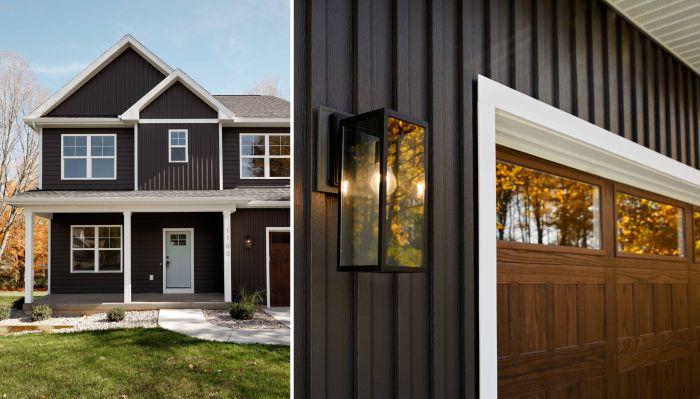Famous architects and their iconic projects: A Journey Through Architectural Marvels
Embark on a fascinating exploration of the world of renowned architects and their iconic projects. From the groundbreaking designs to the lasting impact on architecture and society, this journey promises to be filled with awe-inspiring insights and revelations.
Famous Architects and Their Iconic Projects
Throughout history, there have been several renowned architects who have left a lasting impact on the world of architecture with their groundbreaking projects. These architects have not only shaped the physical landscape of cities but have also influenced the way we perceive and interact with space.
Frank Lloyd Wright
Frank Lloyd Wright, known for his organic architecture philosophy, created iconic projects that seamlessly blended nature with the built environment. Some of his most famous works include:
- Fallingwater: A masterpiece of modern architecture, this house in Pennsylvania is built over a waterfall, showcasing Wright's innovative approach to design.
- Guggenheim Museum: Located in New York City, this spiral-shaped museum revolutionized museum design with its unique form and spatial experience.
Zaha Hadid
Zaha Hadid, a trailblazer in contemporary architecture, pushed the boundaries of design with her futuristic and fluid structures. Some of her notable projects include:
- Heydar Aliyev Center: Situated in Baku, Azerbaijan, this cultural center features undulating forms that challenge traditional notions of architecture.
- MAXXI Museum: Located in Rome, Italy, this museum's dynamic lines and interconnected spaces redefine the museum experience.
I.M. Pei
I.M. Pei, known for his innovative use of geometric forms and materials, created iconic structures that have become landmarks around the world. Some of his well-known projects include:
- Louvre Pyramid: A striking glass pyramid in Paris, France, serves as the main entrance to the Louvre Museum, blending modernity with the historic architecture of the museum.
- Bank of China Tower: This skyscraper in Hong Kong features a distinctive triangular shape, symbolizing strength and innovation in design.
Frank Lloyd Wright
Frank Lloyd Wright was an American architect known for his organic architecture style, which emphasized harmony between human habitation and the natural world. He believed in designing structures that were in harmony with their environment, often incorporating natural materials and open spaces in his designs.
Architectural Style
Frank Lloyd Wright's architectural style can be described as organic and innovative. He believed in creating structures that were in harmony with nature, often incorporating elements like open floor plans, natural light, and geometric shapes inspired by the surrounding environment.
His designs were known for their use of horizontal lines, flat roofs, and cantilevered overhangs, creating a sense of unity between the building and its surroundings.
Significance of Fallingwater
Fallingwater, located in Pennsylvania, is one of Frank Lloyd Wright's most iconic projects. Completed in 1939, this residential home is built over a waterfall, seamlessly blending with its natural surroundings. The significance of Fallingwater lies in its innovative design, which showcases Wright's ability to integrate architecture with nature.
The house is considered a masterpiece of modern architecture and a testament to Wright's vision of organic design.
Comparison with Other Residential Designs
When comparing Fallingwater with other residential designs by Frank Lloyd Wright, one can see similar elements of organic architecture and a strong connection to the natural environment. Wright's other residential projects, such as the Robie House in Chicago and the Taliesin West in Arizona, also exhibit his signature style of clean lines, open spaces, and integration with nature.
However, Fallingwater stands out for its unique location and innovative design, making it a timeless example of Wright's architectural genius.
Zaha Hadid
Zaha Hadid was known for her innovative approach to architecture, pushing boundaries and redefining traditional design concepts. Her unique style often incorporated fluid forms, organic shapes, and futuristic elements, challenging the conventional norms of architecture.
Heydar Aliyev Center
The Heydar Aliyev Center in Baku, Azerbaijan, is a prime example of Zaha Hadid's groundbreaking design concept. The building features undulating curves, a seamless blend of interior and exterior spaces, and a striking white facade that creates a sense of continuity and fluidity.
The overall design symbolizes unity, openness, and harmony, reflecting Hadid's vision of architecture as a transformative art form.
Influence on Modern Architecture
Zaha Hadid's projects have had a profound influence on modern architecture, inspiring a new generation of designers to think outside the box and push the boundaries of creativity. Her innovative use of technology, materials, and form has reshaped the architectural landscape, challenging traditional notions of space, structure, and aesthetics.
Hadid's legacy continues to shape the way we perceive and interact with the built environment, leaving a lasting impact on the future of architecture.
Antoni Gaudí

Antoni Gaudí was a renowned Catalan architect known for his unique and distinctive architectural style that is characterized by its organic shapes, intricate details, and use of vibrant colors. His works are often considered as a blend of Art Nouveau and Gothic styles, creating a one-of-a-kind aesthetic that is instantly recognizable
.Unique Architectural Elements
- Gaudí's use of hyperbolic paraboloids, catenary arches, and intricate tile mosaics set his work apart from other architects of his time.
- He incorporated natural elements such as columns resembling tree trunks, ceilings that mimic branches, and facades that evoke the textures of nature.
Sagrada Família
The Sagrada Família is perhaps Antoni Gaudí's most famous and iconic project. This basilica in Barcelona, Spain, is a masterpiece of intricate design and religious symbolism.
- The facade of the Sagrada Família is adorned with sculptures depicting the life of Jesus Christ, as well as scenes from the Bible and symbols of the Catholic faith.
- The interior of the basilica is bathed in colorful light streaming through stained glass windows, creating a mystical and ethereal atmosphere.
Contrast with Other Famous Religious Structures
When compared to other famous religious structures like Notre Dame Cathedral in Paris or St. Peter's Basilica in Vatican City, the Sagrada Família stands out for its innovative design and unconventional architectural elements.
- While traditional cathedrals focus on grandeur and symmetry, Gaudí's Sagrada Família embraces asymmetry and organic forms, creating a more dynamic and visually striking structure.
- The use of light and color in the Sagrada Família is also distinct, with Gaudí's emphasis on creating a spiritual and transcendent experience for visitors.
I.M. Pei

Ieoh Ming Pei, commonly known as I.M. Pei, was a renowned Chinese-American architect known for his modernist designs that blend traditional elements with contemporary influences. He was celebrated for his innovative approach to architecture and his iconic projects around the world.Throughout his career, I.M.
Pei made significant contributions to modernist architecture by incorporating geometric shapes, natural light, and innovative materials into his designs. His works often reflect a harmonious balance between functionality and aesthetics, creating spaces that are both visually striking and highly functional.
Design Process of the Louvre Pyramid
One of I.M. Pei's most famous projects is the Louvre Pyramid in Paris, France. The design process for the Louvre Pyramid was a challenging yet rewarding endeavor for Pei. The project aimed to modernize the Louvre Museum while respecting its historical significance and architectural heritage.Pei's design for the Louvre Pyramid involved a meticulous process of studying the site, analyzing the surrounding architecture, and experimenting with different forms and materials.
The final design featured a large glass and steel pyramid structure that serves as the main entrance to the museum, allowing natural light to filter into the underground spaces below.
Integration of the Louvre Pyramid with the Louvre Museum
The integration of the Louvre Pyramid with the Louvre Museum was a groundbreaking achievement in architectural history. Pei's design successfully connected the modern pyramid structure with the classical architecture of the museum, creating a seamless transition between the old and the new.The Louvre Pyramid not only serves as a functional entrance but also as a symbolic link between past and present, tradition and innovation.
Its geometric form and transparent façade complement the historic buildings of the Louvre, enhancing the overall visitor experience and revitalizing the museum for a new era.
Concluding Remarks

In conclusion, the realm of famous architects and their iconic projects is a testament to human creativity and ingenuity. Each masterpiece discussed here showcases the power of architectural vision and innovation, leaving a lasting imprint on the world we inhabit.
FAQ Corner
What defines Frank Lloyd Wright's architectural style?
Frank Lloyd Wright's architectural style is characterized by organic architecture, emphasizing harmony with nature and integration of design with the environment.
What makes the Louvre Pyramid by I.M. Pei unique?
The Louvre Pyramid by I.M. Pei is unique for its modernist design that contrasts with the historic Louvre Museum, symbolizing a blend of tradition and innovation.




